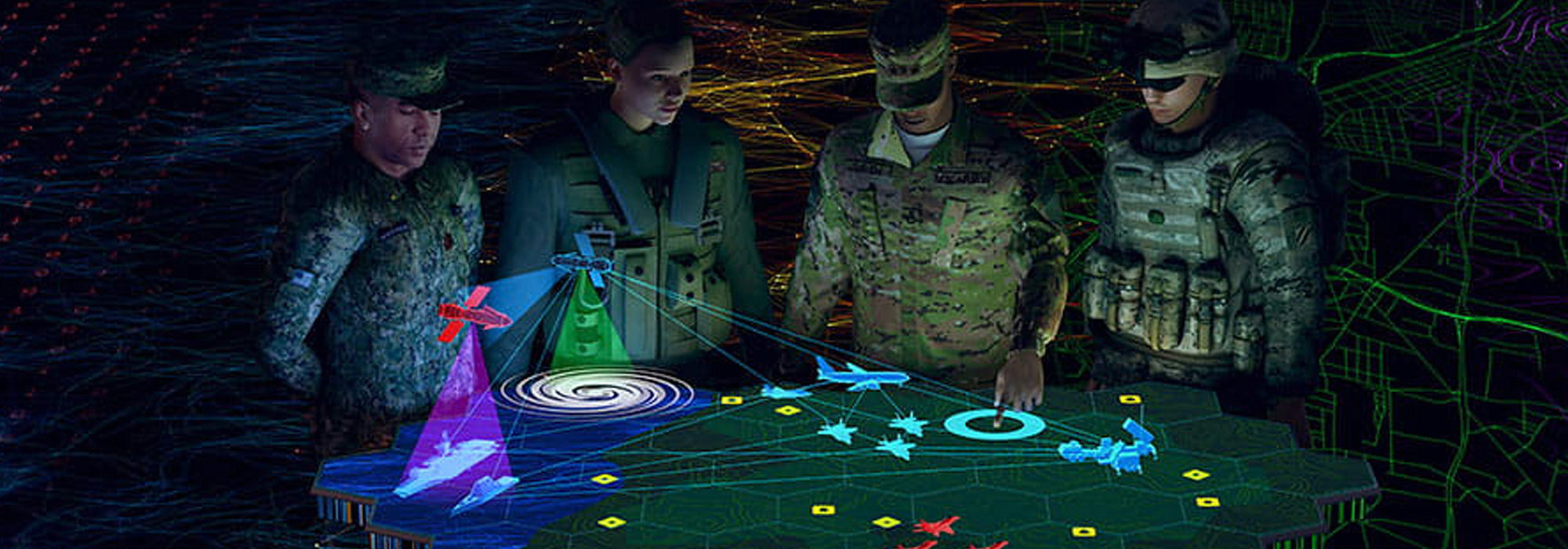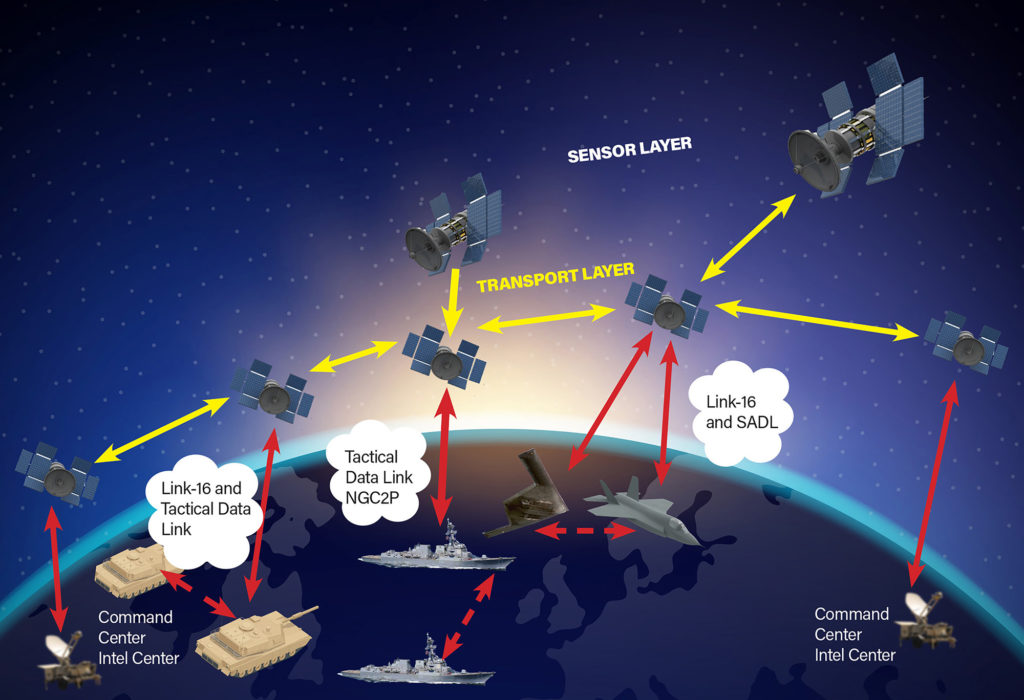Space is the key to unlocking the potential of Joint All-Domain Command and Control.
Warfighting in the space domain will determine the outcome of future conflicts. Success in war will go to the side that possesses superior battlespace knowledge, makes better decisions, directs forces more effectively, and closes kill chains faster. Technologies on orbit are pivotal in securing this advantage, especially when it comes to sensors and connectivity.
Realizing the importance of information and decision advantage, defense leaders formulated the Joint All-Domain Command and Control (JADC2) concept. It envisions an enterprise in which data is collected from a broad array of multi-domain sensors, rapidly transmitted across vast distances, processed into actionable information, and provided to consumers on a demand-relevant basis to empower smart decision-making across the tactical, operational, and strategic command realms.
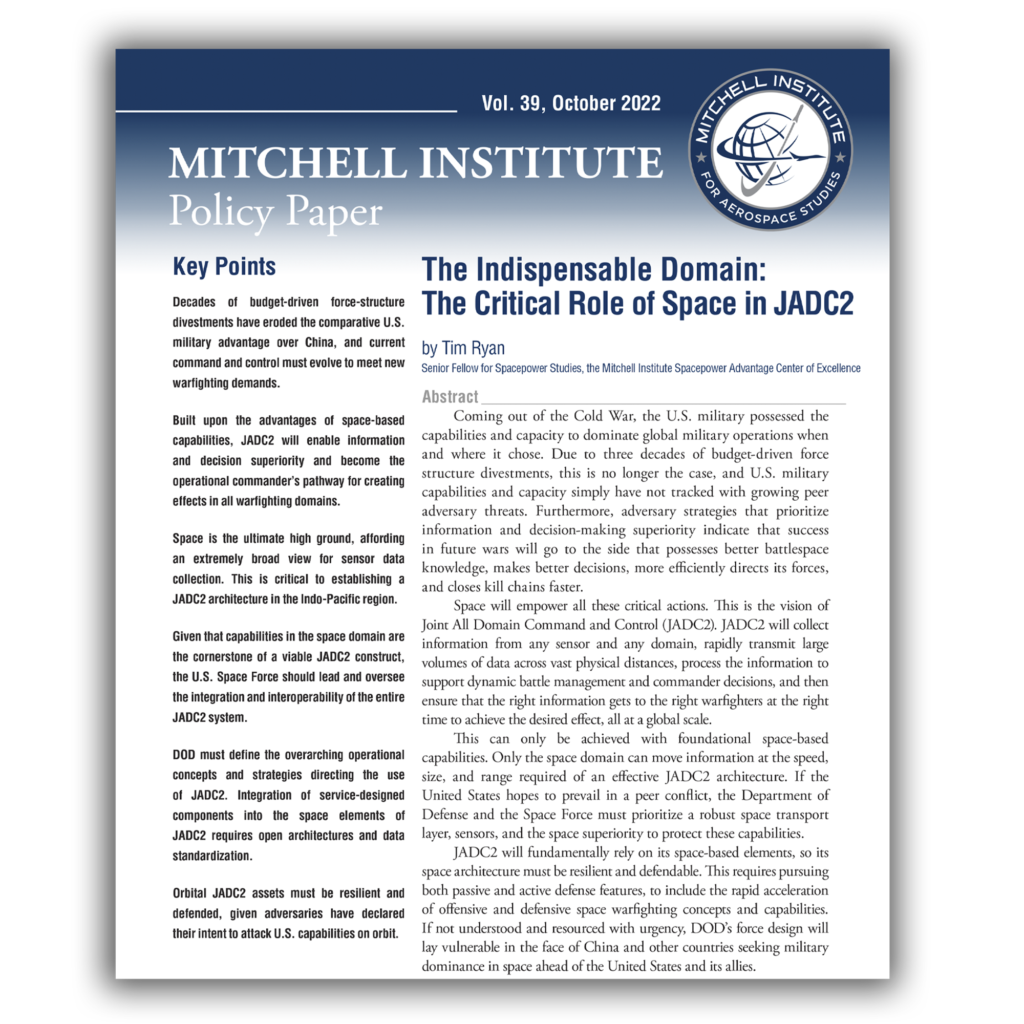
Tim Ryan is a senior resident fellow at the Mitchell Institute for Aerospace Studies. Download the entire report here.
Importantly, this concept is not a singular program or capability. It comes down to using a mix of capabilities to get relevant information to each warfighter at the right time to achieve the desired effects, all at a global scale. As the Department of Defense’s official JADC2 strategy explains, the goal is to “produce the warfighting capability to sense, make sense, and act at all levels and phases of war, across all domains and with partners, to deliver information advantage at the speed of relevance.”
Space-based technologies are essential for manifesting this vision—especially the global communication links able to move data from all sensors. As the U.S. Space Force’s doctrine emphasizes, “One key distinction of warfare in the Information Age is that many weapon systems rely on external sources of information to function.” Space is the ultimate high ground, affording an extremely broad view for sensor data collection. This vantage also enables forces separated by tremendous distances to connect, which is particularly important in the critical Indo-Pacific region.
As former Chief of Space Operations Gen. John “Jay” Raymond explained, “Our ability to sense from the space domain, transport and make sense of data, and then get that data into the hands of our joint warfighting partners on land, in the air and at sea, is what the Space Force delivers to JADC2. Space capabilities underpin modern warfare.”
Manifesting this vision requires a new suite of sensor capabilities and a robust space transport data transmission layer scaled for global operations. For JADC2 to be the operational commander’s pathway for creating effects in the air and on the ground, its orbital assets must be resilient and defended. This reflects a major paradigm shift in the way the U.S. national security establishment views the space domain.
Anyone questioning the necessity of JADC2 should reflect on the Battle of Britain in the summer of 1940. It is a classic example of how information and decision superiority can be the deciding factor in conflict. Having just occupied France, Germany was set on invading the United Kingdom, and an air offensive was the first component of their campaign. Royal Air Force (RAF) combat aircraft were badly outnumbered by more than 7-to-1. When the Luftwaffe raids commenced, over 3,500 German combat aircraft were massed across the English Channel. The RAF possessed only 446 operational fighters. In the 10 days between Aug. 8 and Aug. 18, 1940, the RAF lost 154 pilots, with only 63 green Airmen available from training squadrons to backfill casualties. Yet British forces prevailed because their information and decision superiority enabled them to direct their Hurricane and Spitfire fighter aircraft more effectively and efficiently against the more numerous Luftwaffe. The system allowed the posturing of fighter aircraft at the right time and place to best defend the homeland while avoiding zones of undue risk.
While technology, systems, and processes have changed in the decades since the Battle of Britain, information and decision superiority remain vital military attributes, especially when a force is stretched thin—exactly the circumstances facing the U.S. military. As Deputy Secretary of Defense Kathleen Hicks explained in March 2022 as part of the Pentagon’s JADC2 implementation plan, “Command and control in an increasingly information-focused warfighting environment has never been more critical.”
There is no question that space capabilities will be critical to realizing the JADC2 concept. However, what specific systems and capabilities are needed, how many, and at what cost remain undefined. While many technologies may already be available, many are still on the drawing board. Moreover, there is no clear path for procuring and fielding these capabilities. Confusion regarding the ultimate scale and scope of the JADC2 construct has not helped these efforts. Overarching operational concepts and strategies directing their use must be defined, especially those related to JADC2 functions on orbit.
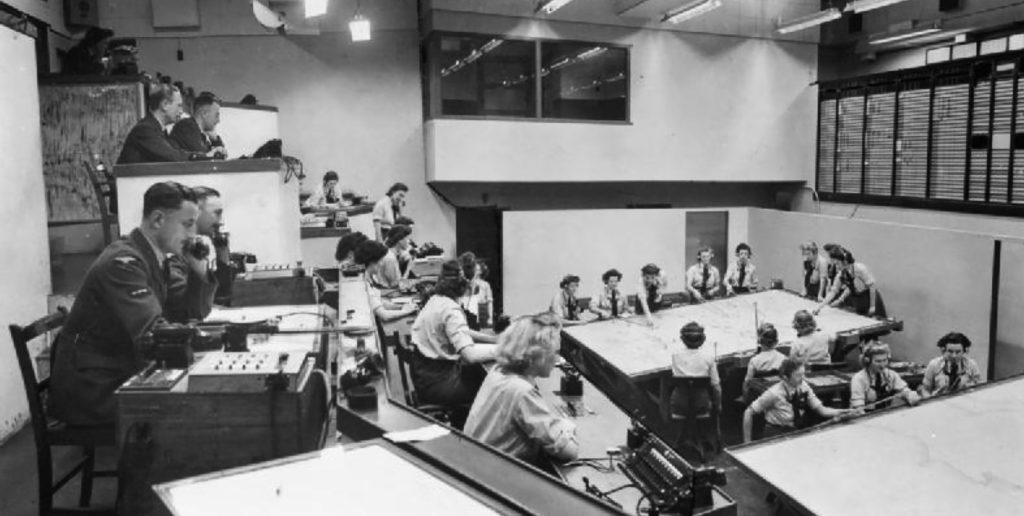
Evolving C2
The United States’ comparative military advantage has deteriorated significantly, both quantitatively and qualitatively.
America’s adversaries have carefully studied core strategies, operational concepts, and technologies favored by the United States for over three decades. America’s successes in Operation Desert Storm and the Kosovo and Iraqi Freedom campaigns taught them about the war-ending effectiveness of the U.S. ability to rapidly deploy, sustain forces, and conduct precision strikes. On the other hand, they also learned about the U.S. military’s total reliance on its C2 infrastructure. The military modernization pathway of other nations reflects the implementation of these lessons learned, and they have specifically molded strategies and forces to counteract the U.S. ability to achieve the same effects of the Desert Storm campaign in the same way. Today, much like the Battle of Britain challenge that faced the Royal Air Force in 1940, the U.S. military risks being overwhelmed by a highly capable adversary. Warfighting success will depend upon ensuring combat assets are employed at the best time and place to secure desired effects while mitigating points of vulnerability.
Existing force structure, already too small given post-Cold War cuts and anemic modernization efforts, will also be diluted in the expanse of the Indo-Pacific. Fighter and bomber aircraft will have low sortie generation rates due to long transits from distant U.S. bases. Consider the example of B-52s flying from Anderson Air Force Base in Guam during the Vietnam War. The round-trip B-52 flight between Guam and Vietnam spanned nearly 6,000 miles and lasted 12 to 14 hours. Potential targets in a China fight might expand those distances even further. Without exquisite and timely off-board intelligence feeds, such distances render these platforms irrelevant against modern mobile targets. This contrasts with recent operations in Iraq and Syria, where a single jet could turn multiple sorties in that same period and remain in constant contact with its principal command and control element. This challenge is not restricted to air power, with ships and ground forces similarly spread thin by the realities imposed by the theater’s geometry. Combat assets need highly efficient direction to meet campaign objectives while avoiding areas that present undue risk. Consequently, U.S. forces require information and decision advantage.
The U.S. defense enterprise must adjust to the new battlespace realities if it is to secure and maintain information and decision superiority—it is vital to prevailing against its adversaries.
Several key principles will be crucial for JADC2 architects to follow. JADC2 is only as effective as the data empowering it. Data inputs are the backbone of information and decision superiority. Sensors must be positioned at the right time and place to secure necessary insights regarding adversary activities, force composition, and points of vulnerability. Data is also important when seeking to command and control U.S. and allied forces, secure key infrastructure, and track incoming adversary threats. The scale and scope of the Pacific region will demand a new generation of sensors to gather the data necessary to empower smart decision-making. This includes systems that can penetrate, see, or sense deep behind enemy lines and provide persistent observations.
JADC2 must move information at the speed of need. Mobility and speed have always been imperatives in warfare. Historically, however, the focus has been on how operators or platforms could leverage these advantages physically. In the Information Age, successful military operations increasingly depend on the abilities of sensors, processing power, and human actors in the decision sphere to understand the battlespace. This includes finding and fixing military targets to best secure desired effects while reducing vulnerability. That’s the crux of the modern era of warfare—the tools of the Industrial Age still matter—the planes, ships, tanks, satellites, and fielded forces—but now, information superiority is of equal if not greater importance. Existing assets need to be directed to execute operations at the best time and place while avoiding undue risk to maximize force efficiency. That requires situational awareness and connectivity.
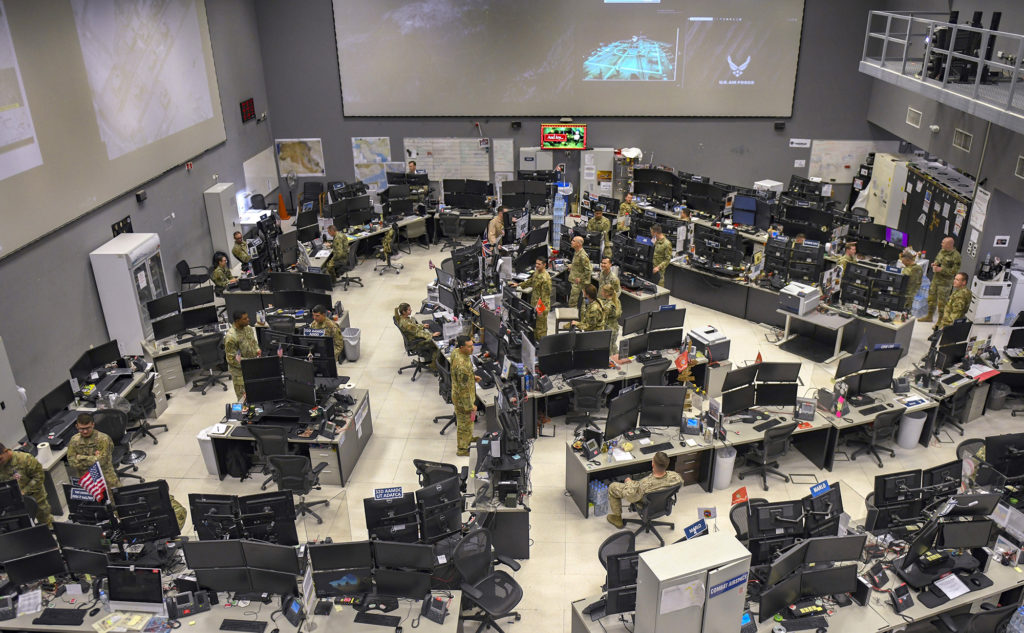
Space Power’s Contributions to JADC2
Effects delivered through the space domain are crucial in delivering JADC2. Sensors, processing power, and C2 expertise all linked by robust connectivity are the keystone elements that comprise this vision. The space domain affords distinct advantages in all these areas, but space is particularly important when it comes to sensors and connectivity.
Sensing
Data collection is a critical component in JADC2. It all comes down to placing sensors in the right place and time to gather desired inputs across the battlespace—from friendly lines to deep over enemy territory. In the past, these collection functions were largely executed from the air, which afforded the ability to rapidly span large swaths of territory and observe areas of interest with the advantage of altitude. While the National Reconnaissance Office provided overhead ISR as well, its tasking was based on priorities for the overall intelligence community and not adequate to support the needs of operational commanders.
Today’s air domain is not only increasingly contested and denied over enemy peripheries, but air-based data collection capabilities must also transit extremely long distances from U.S. and allied bases to reach the front lines. While the air domain will still be important in this regard, data-collection missions will increasingly transition to space. The ability to cover vast portions of the Earth with rapid refresh rates and constant coverage, avoid traditional air defenses, and do so without having to sustain large rotations of mission aircraft to net the desired result is a tremendous advantage afforded by systems on orbit.
Space sensors, whether moving target identification or other types, must also be designed as nodes in a broader multi-domain sensor net. It all comes down to gathering disparate flows of information, fusing them into a whole that reveals more actionable knowledge of the battlespace than can be provided by any individual source. While space-based sensors will obviously yield crucial inputs, sensors located in the air, on land, or at sea could also prove equally valuable. The real power is achieved through fusing inputs from all these sources in a highly dynamic, effects-oriented fashion to best achieve mission results.
Space Transport Layer
Operating and managing the global JADC2 space transport layer and associated infrastructure is a critical mission the Space Force will accomplish in the next few years. Sensors in space and other JADC2 nodes offer significant potential, but the entire enterprise must be connected to deliver desired results. While a range of terrestrial networks will remain important, an overarching global communication backbone is required to fully connect all the various elements of the JADC2 enterprise in a dependable, high-speed, seamless, resilient fashion. That is a requirement that can be met best through space-based capabilities due to their global perspective, global persistence, and global information connectivity.
A better set of capabilities begins with a distributed, resilient architecture involving far more SATCOM satellites than are currently on orbit. This will increase resilience, responsiveness, and functionality. To make up the sheer quantity required, the JADC2 space transport layer will likely be a combination of government and commercial space systems distributed over many orbital regimes and evolve over time to emphasize different link technologies, satellites, and orbits. Said more simply, this is a far more numerous, distributed set of satellites that will empower the JADC2 transport layer in a way that helps avoid single points of failure and that will also bring more modern capabilities to orbit.
The Space Development Agency (SDA) will launch a constellation of low-Earth orbit (LEO) satellites integrating the services’ tactical networks to create the transport layer of a meshed network. The SDA views the transport later as primarily an integration problem—integrating multiple service efforts into a cohesive whole. As such, the SDA is working with the individual services on specific integration requirements.
As the Space Force designs the JADC2 space transport layer, it must employ wide-band array capabilities, enabling users to send and receive from multiple satellites on multiple frequencies in multiple orbits. Nodes would thus operate like a modern cellphone, which is able to rely upon numerous proprietary networks in a way that appears seamless to the user and provides an encompassing range of service.
Space Force leaders fully understand the importance of on-orbit communication capabilities in realizing the JADC2 vision. As Vice Chief of Space Operations Gen. David “DT” Thompson explained, “JADC2 is an absolute priority for the United States Space Force. Enabling JADC2 by connecting the joint force through space may well be our greatest contribution to joint operations in the next decade.” No matter how much DOD invests in sensors, processing power, C2 centers, or front-line assets, none will really matter without the ability for robust, rapid, and resilient space-centric communications.
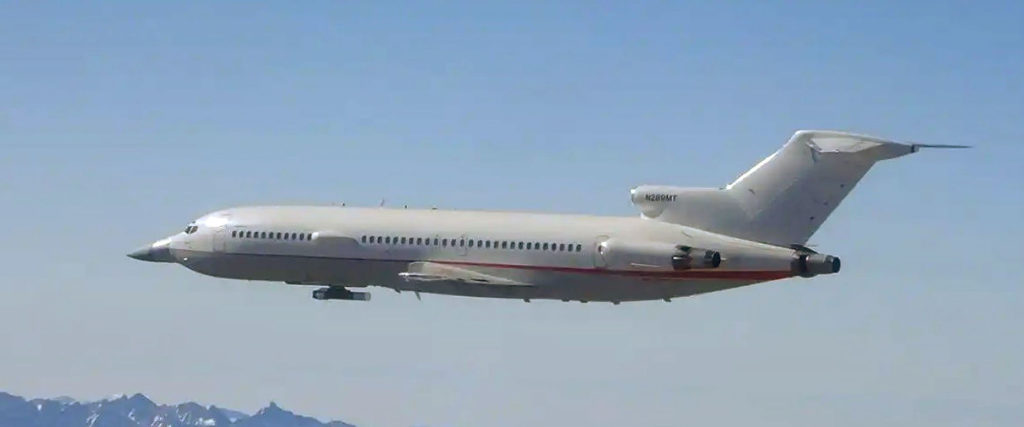
Space Force’s Combat Role for JADC2
The U.S. Space Force must be prepared to defend sensors on orbit and in the space data transport layer. Key elements required to achieve this include:
1. A survivable JADC2 enterprise composed of hardened, proliferated networked systems (made of military, commercial, and alliance assets) across multiple orbits (LEO, MEO, GEO, and cislunar) to enhance system resilience, complicate adversary simultaneity of targeting and attack, and provide defense in depth (to include rapid reconstitution).
2. Robust Space Domain Awareness, including space-based ISR platforms (such as the Geosynchronous Space Situational Awareness [GSSAP] spacecraft) for LEO, MEO, GEO, and cislunar orbits to detect and identify adversary threats and prevent attack.
3. Space weapons to defend and defeat active attacks on the JADC2 architecture and the space transport layer’s lines of communication. These will need to be both offensive and defensive as well as all-domain.
Conclusion
A stark reality faces the nation: the United States is at risk of failing to deter its adversaries, especially in the Indo-Pacific, because its Air Force and Space Force currently lack the lethality and capacity to prevail in a peer conflict. This does not have to be the case. One approach to achieving a war-winning level of combat power with today’s forces is to transform how DOD commands and controls its future operations in all warfighting domains. Creating a C2 structure that exploits superior decision cycles and levels of information will enable America’s combatant commanders to seize the initiative. Possessing an information and decision advantage is an instrumental precondition to a credible deterrent capability.
Operation Desert Storm was a success because the United States fielded technologically advanced forces that exploited superior C2 systems to offset numerically superior forces in the Cold War. In the current era, JADC2 is a conceptually parallel path to regaining a dominant warfighting posture for the U.S. military.
Current Department of the Air Force leadership understands the import of these efforts, as Gen. C.Q. Brown said in June 2022, “We cannot afford to lose a day in this effort. Speed, agility, and resilience are essential to decision-making and battle management in future highly contested environments. The progress we make in JADC2 will be determinate in our success as a joint force.” We cannot afford to wait on this imperative; JADC2 and space will be critical to this effort.
